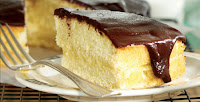 Fifty-four years ago Rav Eliyahu Eliezer Dessler z”tl was nifter. I can pretty safely say that his Torah (both the Hebrew of Michtav M’Eliyahu and R Carmell’s translation Strive for Truth) has and continues to be a major influence in my life.
Fifty-four years ago Rav Eliyahu Eliezer Dessler z”tl was nifter. I can pretty safely say that his Torah (both the Hebrew of Michtav M’Eliyahu and R Carmell’s translation Strive for Truth) has and continues to be a major influence in my life.
I remember once, while learning in E”Y, spending an afternoon (one of many) with R Moshe Orbach z”tl, one of his Talmidim from England. He showed me a letter of introduction that R Dessler had written him prior to his leaving England to come to America to teach Torah. He kept it in a plastic slip cover and gently hand it to me, like trophy or a fine sculpture. The Hebrew script was beautiful. It was the most artful writing I had ever seen, it seemed to reflect the sh’laymus of the writer.
One of Rav Dessler’s greatest contributions to Hashkafic thought was explaining to the Torah observant world that it is giving that leads us to love, not love that leads us to giving. Rav Dessler, in fact, divided the world into two types of people: Givers and Takers. I find myself constantly thinking about this, as it is a something I, at times, struggle with.
I’d like to share several selections from Jonathan Rosenblum’s biography of Rav Dessler. It is a remarkable work (simply worth the read for the introduction and the few chapters on the Kelm school of mussar):
Each middah with which a person is born, Rabbi Dessler showed, has both its positive and negative side. For instance, man’s innate sense of is own independence, which causes him to rebel against divine commandments and to attribute everything he achieves to his own abilities, also has its positive side. Without that sense of independence, man would lack awareness of his own free will. He could not exercise his bechira (free will)-the very purpose for which he was created. A person’s feeling of independence protects him from despairing of ever being able to change himself. (page 314)
He stressed repairing oneself and only then influencing others. A poem entitled “L’Atzmi- To Myself” expressed his attitude:
To myself I record
in order that I can review the truth I saw
I guard it and remember it…
Is this [guarding for myself] not the outgrowth of self-love?
That is what the superficial view claims. [But the true view is]:
If my heart does not learn, how will it teach?
Only that which goes out from the heart-a heart overflowing its banks-can enter the heart of another. (page 297)
One Friday night, shortly after their marriage, Rabbi Naftoli Friedler and his wife invited Rabbi Dessler for a meal. He noticed that they had only six very cheap knives that would rust easily. Rabbi Dessler came again for dinner, and this time he brought with him six new stainless steel knives. (page 226)
One time, while in New York, Rabbi Dessler when to visit Rabbi Avrohom Yaffen, the Novordhok Rosh Yeshiva, together with Rabbi Naftoli Friedler. As they went through the subway turnstile. Rabbi Friedler heard the subway pulling into the station below and started to run. Rabbi Dessler, however, held him fast. “If it’s not this train, it will be the next one,” he said. “Never do anything in this world with behillus (hurriedly).” (Page 223)
“Sometimes we see with clarity that someone of no great ability succeeds in achieving something of the greatest importance to the entire world,” he writes in one letter. “With what does he succeed to such a degree? Only because no one else understood the importance of that matter. And since he was the only one to come forward, all the joy [of success] falls to his lot.” (page 201)
Blog note: If you would like to get updates of new postings, please subscribe here. This service will replace the standard personal email notices that I send out and allow you to read postings without having to go directly to this blog. Thanks for taking time to read.






